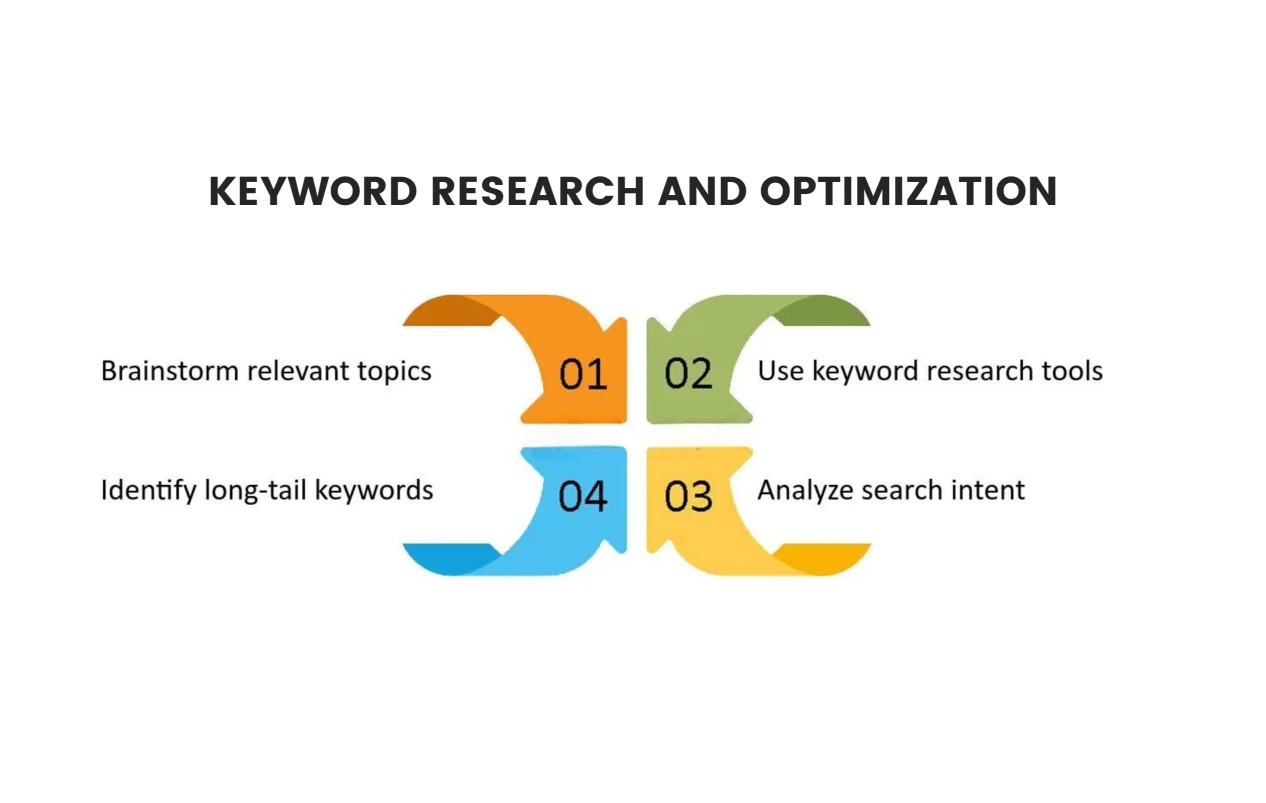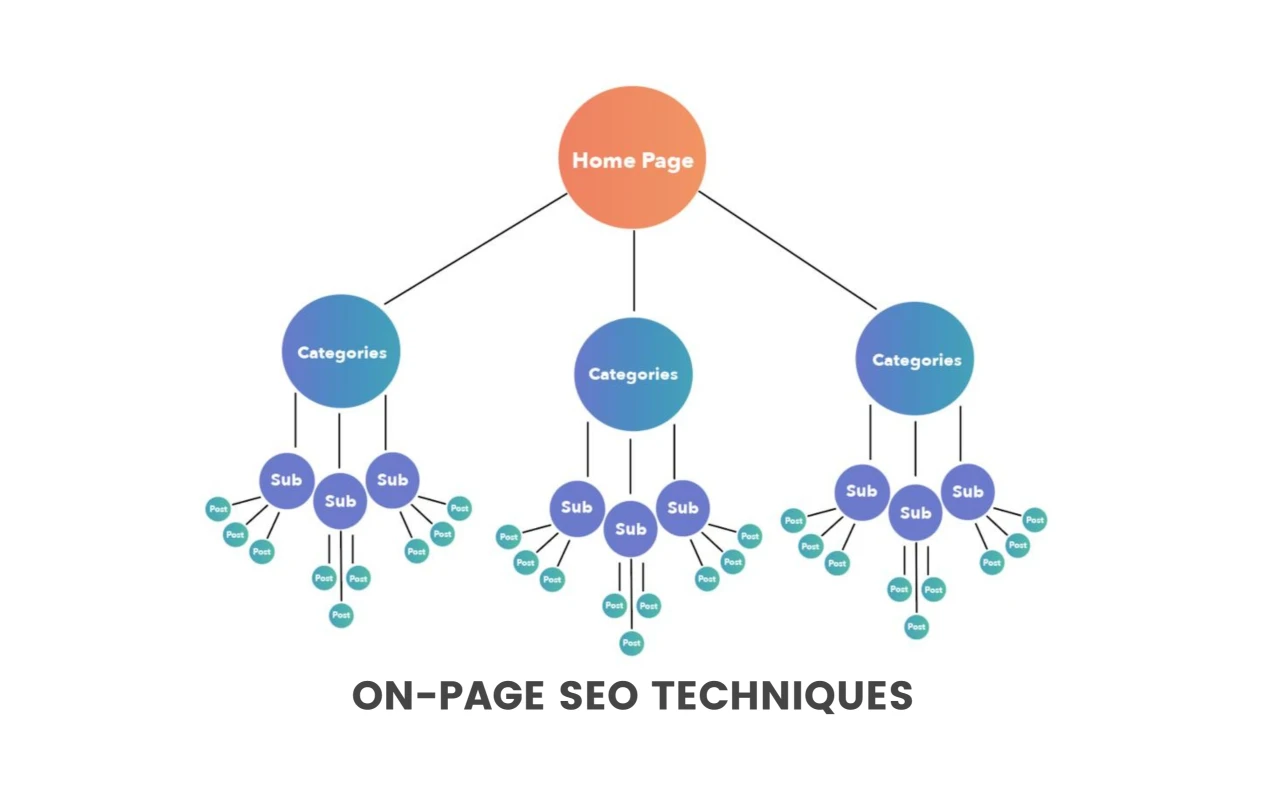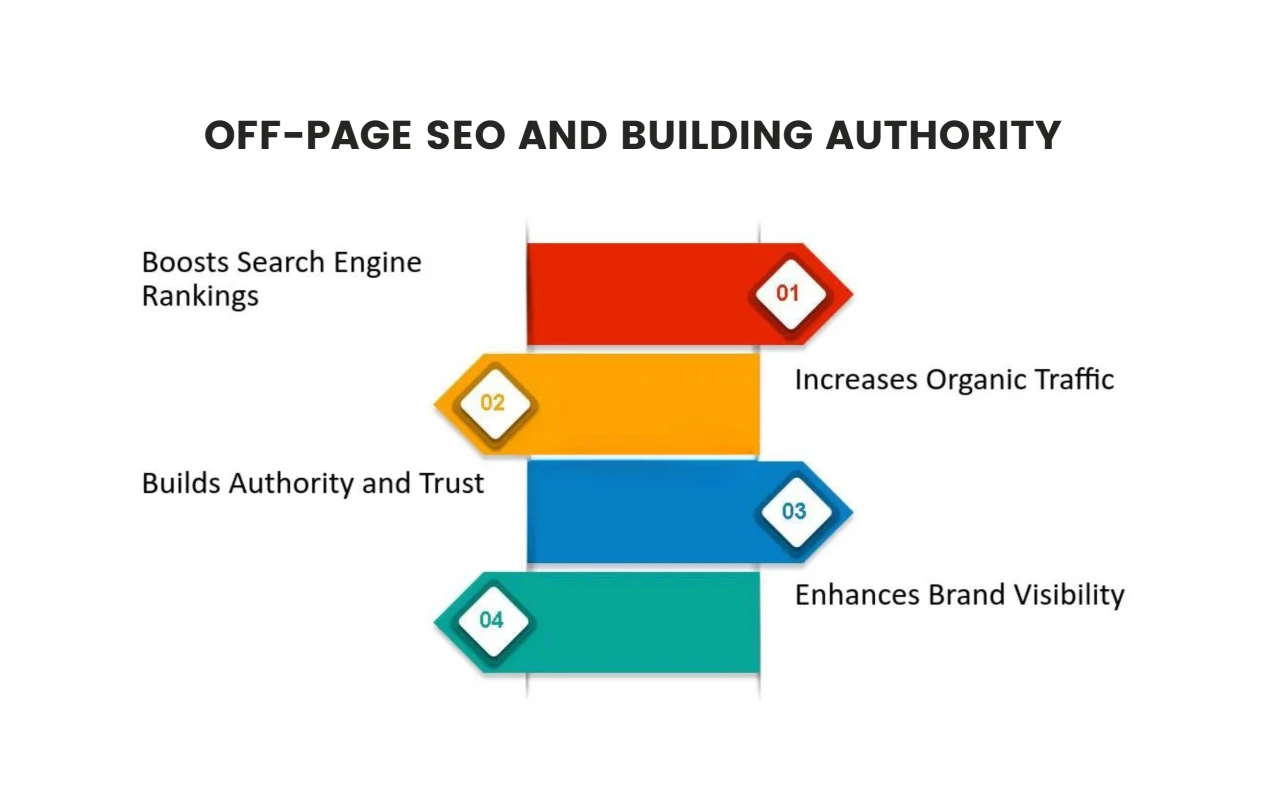SEO in 2024: Simplifying the Complex World of Digital Visibility
Welcome to the exciting part of Marketing, Search Engine Optimization, AKA SEO Marketing, in 2024, where we’ll embark on a journey to unlock the secrets of digital visibility! As the digital landscape constantly evolves, SEO has become more than just a skill—it’s an essential part of making your mark online. Whether you’re a business owner, content creator, or just starting out in the digital realm, understanding and applying SEO is key to ensuring your voice is heard in the vast online universe.
Our guide, “SEO in 2024: The Ultimate Beginner’s Guide to Mastering Search Engine Optimization,” is here to simplify these complexities. It’s tailored for beginners and packed with all the essentials—from keyword research to adapting to the latest algorithm updates. Our goal? To empower you with the knowledge and tools you need to shine in the digital world. So, let’s dive in and explore the dynamic and ever-changing world of SEO together!
Understanding SEO Basics

Search Engine Optimization (SEO) is a multifaceted digital marketing strategy aimed at improving the visibility and ranking of a website in search engine results pages (SERPs). At its core, SEO involves optimizing various aspects of a website to make it more attractive to search engines like Google, Bing, and others. This optimization ensures that when users search for information related to the content on your website, your site has a better chance of appearing prominently in their search results.
Understanding how search engines work is crucial to mastering SEO. Search engines use complex algorithms to crawl the web, index content, and rank pages based on relevance and authority. They aim to provide users with the most relevant, high-quality content in response to their queries. This process involves scanning billions of web pages, understanding their content, and organizing them in a way that offers the best answers to a user’s search.
At the Heart of SEO Are Several Key Concepts

1. Keywords
Keywords are words or phrases that users type into search engines when looking for information. For example, a bakery in New York might target keywords like “best New York cheesecake” or “fresh bread in Brooklyn.” Understanding and strategically using these keywords in your website’s content, titles, and meta descriptions are vital for SEO.
2. On-Page SEO
This refers to the optimization of individual web pages to rank higher in search engines. Consider a blog post about healthy eating; optimizing this page would involve using relevant keywords like “healthy diets,” creating engaging and informative content, and ensuring the page loads quickly and is easy to navigate on both desktop and mobile devices.
3. Off-Page SEO
Involves actions taken outside of your own website to impact your rankings within search engine results pages. Building backlinks is a primary component. For instance, if a well-known health blogger links to your healthy eating article, it increases the authority and trustworthiness of your site.
4. Local SEO
Businesses must target customers in a specific area. For example, suppose you run a local coffee shop. In that case, optimizing your Google My Business listing, ensuring your shop is listed in local directories, and having consistent contact information across the web are essential steps.
Now a question: Think about your website or business. What keywords best represent your products or services? How can you optimize your web pages to address these terms better?
By understanding these basic components and how they work together, you can begin to craft an effective SEO strategy tailored to your specific needs. Remember, SEO is not a one-size-fits-all solution; it requires continuous learning and adaptation to the ever-changing digital landscape.
2024 SEO Trends and Updates

As we continue to ride the digital wave, staying updated with the latest trends and algorithm shifts is more important than ever for anyone keen on boosting their online presence.
AI and Machine Learning

It’s like a sci-fi movie, but real! AI is transforming SEO, with search engines utilizing cutting-edge machine learning to deliver search results that feel almost tailor-made. This means your website needs to focus on creating a fabulous user experience and top-notch content. The smarter algorithms get, the more they understand what users want and the relevance of your content.
Mobile-First Indexing

Have you checked your website on your phone lately? With most internet access happening via mobile devices, search engines are putting mobile-friendly websites first. In 2024, a website that shines on mobile is a must-have. Think lightning-fast loading, responsive design, and navigation that feels like a breeze on mobile.
Video Content Optimization

YouTube Video Creation That Gets Views: videos are the new stars of the internet! Their growth in popularity makes them a key player in your SEO strategy. To optimize video content, focus on snappy titles, informative descriptions, and tags that hit the mark. And remember, it’s not just about being found – your video content should be accessible and genuinely helpful to viewers.
Keyword Research and Optimization

Mastering keyword research and optimization is essential for any successful SEO strategy in 2024. it’s a step-by-step guide on conducting keyword research, introduces tools and techniques for beginners, and explains how to integrate these keywords into your content effectively.
1. Conducting Keyword Research
Identify Your Niche Topics: Start by defining the core topics relevant to your business or website. For instance, if you run a vegan bakery, your topics might include “vegan baking,” “gluten-free pastries,” and “vegan bakery locations.”
2. Utilize Keyword Research Tools
Tools like Google Keyword Planner, SEMrush, and Ahrefs offer valuable insights into keyword search volume, competition, and relevance. For beginners, Google’s Keyword Planner is a great starting point as it’s free and user-friendly.
3. Analyze Search Intent
Understanding why people search for a specific term is crucial. Are they looking to buy, to learn, or to locate something? For example, someone searching for “buy vegan cupcakes” is likely ready to make a purchase, whereas “vegan cupcake recipes” indicate a desire to learn.
4. Look for Long-Tail Keywords
Long-tail keywords are longer and more specific phrases that tend to have less competition but are highly targeted. For example, “best vegan chocolate chip cookies in New York” is a long-tail keyword.
5. Optimizing Content with Keywords
Strategic Placement: Once you have your list of keywords, incorporate them into your website’s content, including titles, headers, meta descriptions, and the body text. Remember, the placement should feel natural – forcing a keyword into your content can do more harm than good.
6. Focus on Content Quality
While keywords are important, the quality of your content is paramount. Ensure your content is informative, well-written, and provides value to your audience. This approach not only appeals to your readers but also aligns with search engines’ focus on content quality.
7. Use Keywords in Images and Videos
Don’t forget to optimize your non-text content. Include keywords in the file names, titles, and alt text of images, and the titles and descriptions of videos.
8. Monitor and Update Regularly
Keyword trends can change, so it’s important to review and update your content periodically. Use analytics tools to track how well your keywords are performing and make adjustments as needed.
Ensuring the seamless importance of user experience in SEO is crucial, as it directly influences how visitors interact with your website and, consequently, affects your search engine rankings.
Section 4: On-Page SEO Techniques

On-page SEO is a critical component of your overall SEO strategy. It involves optimizing the elements of your website that you have direct control over. This section will dive into the essential on-page SEO factors, guide you through optimizing your website’s structure and content, and discuss the significance of meta tags, URLs, and mobile optimization.
1. High-Quality Content
Creating high-quality content is akin to crafting a masterpiece, where each word is meticulously chosen to resonate with the audience. Imagine a canvas, where every stroke of the brush is deliberate, blending a rich palette of ideas, insights, and experiences. This approach to content creation integrates keywords seamlessly, much like an artist embedding subtle hues into a painting, ensuring that the message is not only found but also felt. The content should be engaging, drawing readers in with compelling narratives, vivid descriptions, and thought-provoking questions. It’s about creating a fresh perspective, offering new angles on familiar topics, and providing value that sparks curiosity and encourages exploration. Such content isn’t just read; it’s experienced, leaving a lasting impression on the audience.
2. Optimizing Website Structure
URL Structure and Internal Linking” involves designing a website’s architecture to enhance user experience and search engine visibility. A well-planned URL structure should be logical and hierarchical, making it easy for both users and search engines to understand the website’s layout. URLs should be concise descriptive, and include relevant keywords to improve search engine rankings. Additionally, strategic internal linking is crucial. This internal linking not only aids in easier navigation for users but also enables search engines to crawl the site more effectively, indexing more pages and boosting overall visibility. Together, these practices create a robust and SEO-friendly website structure, ensuring a better user experience and higher search engine rankings.
3. Meta Tags and Descriptions
Title Tags and Meta Descriptions are crucial elements of SEO and web page optimization. A Title Tag, appearing at the top of a browser window and as the headline in search engine results, succinctly represents the main topic or purpose of a webpage, greatly influencing user click-through rates. It should be concise, keyword-rich, and relevant, ideally within 50-60 characters, to avoid being truncated in search results. On the other hand, a Meta Description provides a brief summary of the page’s content, serving as an advertisement in search results.
4. Image Optimization
When optimizing images for the web, a key focus is on balancing visual quality with efficient loading times. The Alt Text is crucial for accessibility, providing a text description of the image’s content for screen readers and when the image fails to load. It should be concise yet descriptive. Regarding file size and format, smaller files load faster, enhancing the user experience, especially on mobile devices with slower internet connections. Popular formats like JPEG, PNG, and WebP offer different balances between quality and size. WebP, a newer format, provides superior compression and quality characteristics. Ultimately, the choice of format and the level of compression should consider the image’s purpose and the expected audience’s internet speed.
5. Optimizing for User Experience
When optimizing for user experience with a focus on readability and engagement, it’s essential to prioritize clear and concise content that resonates with the target audience. This involves using easily understandable language, avoiding jargon, and breaking down complex ideas into digestible chunks. Enhancing engagement can be achieved through interactive elements, like quizzes or polls, and by incorporating visually appealing graphics or videos. It’s also crucial to ensure that the website or application is easily navigable, with a logical flow and intuitive design that guides users effortlessly through their journey. Personalization plays a key role in increasing engagement and tailoring content and recommendations to individual user preferences. Regular testing and user feedback are indispensable in this process, as they provide insights into user behavior and preferences, enabling continuous refinement for a more satisfying user experience.
The essential elements of a winning web design are a must-read for anyone interested in effective web design.
Section 5: Off-Page SEO and Building Authority

Off-page SEO, primarily focused on building your site’s authority and reputation, is a crucial aspect of your overall SEO strategy. This section will delve into the concept of link building, the strategies for acquiring quality backlinks, and the importance of domain authority in enhancing your website’s search engine ranking.
1. Understanding Link Building
Understanding Link Building” revolves around the strategic acquisition of hyperlinks from external websites to your own, a crucial practice in SEO. Essentially, it’s about convincing other site owners to vouch for your site’s credibility and relevance by linking to it. The importance of link building lies in how search engines, like Google, perceive these links: each one acts as a vote of confidence, potentially boosting your site’s visibility and search ranking. However, the emphasis should always be on quality over quantity. Acquiring a few high-quality links from reputable, relevant sites is far more beneficial than numerous links from low-quality or unrelated sources. This focus on quality ensures that the links contribute positively to your site’s authority and search engine performance rather than potentially harming it.
2. Strategies for Acquiring Quality Backlinks
To effectively acquire quality backlinks, a multifaceted approach is crucial. Start with guest blogging; by creating valuable, relevant content for reputable websites in your niche, you can establish authority and gain high-quality backlinks. Simultaneously, focus on creating and promoting engaging, original content on your own platform. This not only attracts backlinks but also encourages shares and interaction. In addition, employ broken link building by identifying broken links on other websites and offering your content as a replacement, which is beneficial for both parties. Lastly, leverage social media platforms to amplify your content’s reach, engaging with your audience and increasing the likelihood of your content being shared and linked to. This integrated strategy ensures a steady acquisition of quality backlinks, enhancing your website’s authority and search engine rankings.
3. The Basics of Domain Authority
Domain Authority (DA) is a metric developed by Moz that predicts how well a website will rank on search engine result pages (SERPs). It is a score on a 100-point scale that estimates how likely a website is to rank in comparison to other websites in search engine results. Several factors influence Domain Authority, including the number and quality of inbound links, site volume (the number of pages), the age of the domain, and social signals. Essentially, DA is a comprehensive measure that integrates various elements of a website’s overall performance, including its backlink profile and its popularity, to give an idea of its potential search engine ranking strength. However, it’s important to remember that DA is not a metric used by Google in determining search rankings but is rather a representation of how competitive a site is in the context of SEO.
4. Enhancing Your Domain Authority
To enhance your domain authority, it’s vital to focus on creating consistent, high-quality content that resonates with your audience. This approach not only engages your current readers but also attracts new ones, thereby increasing your site’s visibility and credibility. Simultaneously, networking and collaboration play a crucial role. By establishing relationships with other reputable sites in your niche, you can gain valuable backlinks and tap into their audiences, which can significantly boost your domain’s reputation and reach. Regular backlink audits are equally important, as they help you identify and remove any potentially harmful links, ensuring that your backlink profile remains strong and positively influences your domain authority. This holistic strategy, combining content excellence with smart networking and diligent backlink management, lays a robust foundation for increasing your site’s domain authority.
Section 6: Local SEO and Its Significance in 2024

As the digital landscape continues to evolve, the importance of local SEO has become more pronounced, especially for businesses targeting specific geographic locations. In 2024, local SEO is not just a tactic but a critical component of a comprehensive SEO strategy. This section explores the significance of local SEO, offers guidance on optimizing for local search, and provides tips for effectively using Google My Business.
1. Understanding the Importance of Local SEO
Local SEO helps businesses reach potential customers in their vicinity. This is particularly important to understand SEO and small businesses or those with physical locations, like restaurants, clinics, or retail stores. Searches with local intent (“near me” or specific city names) often have higher conversion rates as they are made by users actively seeking products or services in their area.
2. Optimizing for Local Search
Optimizing for local search is a crucial strategy for businesses aiming to increase their visibility in specific geographical areas. This involves carefully integrating local keywords—terms that are relevant and commonly used by the target audience in the locality—into website content, meta tags, and other on-page elements. Maintaining Name, Address, and Phone number (NAP) consistency across all online platforms is vital; discrepancies can lead to decreased search engine trust and poorer rankings. Additionally, creating content that resonates with local interests, events, or issues can significantly enhance relevance and engagement. This localized approach not only improves search engine rankings but also fosters a more direct and meaningful connection with the local customer base.
3. Leveraging Google My Business
Leveraging Google My Business (GMB), now known as Google Business Profile, is a key strategy for boosting traffic and customer engagement. Essential steps include claiming and optimizing your listing, which involves providing comprehensive business information like operating details, services, hours, and location. This optimization helps in indexing content across Google Search and Maps, enhancing visibility. Encouraging reviews is vital, as positive feedback directly correlates with sales, and responding to all reviews, good or bad, significantly boosts customer trust. Regular updates to your profile, like posting user-generated visual content and promoting special events and offers, play a crucial role. These practices not only showcase your business but also keep your information relevant and engaging, attracting more customers and fostering loyalty.
4. Building Local Links and Citations
When aiming to build local links and citations for a business, engaging with local communities and listing in local directories are key strategies. By actively participating in community events, forums, and social media groups, a business can establish a strong local presence and foster relationships with community members and leaders. This engagement not only enhances the business’s visibility but also provides opportunities for local backlinking through event sponsorships, community project involvement, or local news coverage. Simultaneously, listing the business in local directories ensures it is easily discoverable by residents searching for relevant services or products. This dual approach of community engagement and directory listings helps create a robust local SEO footprint, making the business more accessible and trusted within the local area.
In 2024, local SEO is indispensable for businesses looking to establish a strong local presence. By focusing on local-specific and leveraging the Google My Business optimizations, businesses can effectively connect with their local audience and stand out in an increasingly competitive digital space.
Conclusion
As we wrap up our journey through the vibrant world of SEO in 2024, I want to extend a big thank you for joining me on this enlightening path. It’s been a real adventure diving into the essentials of SEO, all the way through to the nitty-gritty of advanced tactics and analytics. Remember, SEO in 2024 isn’t just about ticking boxes; it’s about riding the waves of digital change, tuning into the subtle shifts in how people search and how search engines think, and being ready to adapt at a moment’s notice.
Discover how SEO for small businesses in Maryland can transform your online presence and drive growth – explore our expert services today!
Think of this guide as your friendly SEO compass, guiding you through a landscape that’s always shifting but always exciting. Whether you’re just starting out or you’re an SEO whiz looking to keep your skills sharp, the insights and strategies we’ve explored together are your toolkit for success. Navigating the twists and turns of SEO is all about staying curious agile, and always putting your audience first.
For all you business owners, content wizards, and digital marketing superheroes out there, mastering SEO in 2024 is like being a chef in a gourmet kitchen. It’s about blending technical know-how with a dash of creative flair. With the right mix of ingredients—knowledge, tools, and a sprinkle of adaptability—you can cook up a storm and make your mark in the online world.
And remember, it’s okay if this all seems a bit overwhelming at first. Like learning to ride a bike, it gets easier with practice. So, take these tips, get out there, and start experimenting. I can’t wait to see what you’ll create. Let’s keep the conversation going – drop your questions, share your successes, and let’s learn from each other. Here’s to making the digital space a brighter, more searchable place for everyone!
